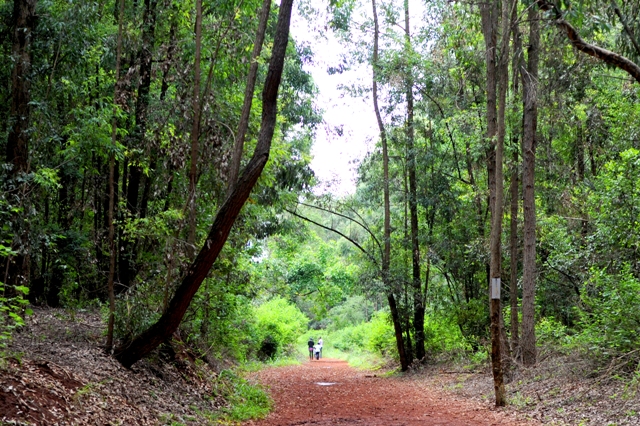Promotion of Agro-forestry and Green Economy
The main income generating activity in the county is commercial forestry where farmers plant trees for commercial purposes in the form of timber and poles. Other activities that generate income are tree nurseries where farmers sell tree seedlings. Dairy farmers also plant fodder trees like Calleindra, Sesbania sesban, Leucaena leucacephella which they use to feed their livestock. There is also bee keeping. Farmers also plant fruit trees where they produce mangoes, avocados, macadamia, oranges, guava and loquats for sale.
The obilizati trees are planted around identified water catchment sites in order to protect these areas. There is also the enforcement of Environmental Coordination and Management Act (2002) and Forest Act 2005 to discourage cutting down of trees. This is expected to enhance protection of water catchment areas. Efforts are being made to curb soil erosion in the county through embracing the vision of attaining 10 percent forest cover from the current 6.5 percent in the county. Efforts are being made to encourage farmers to plant 10 percent of total land area with trees which can be fruit trees, fodder trees or any other plantation. This way, soil erosion from water and wind is reduced as trees hold the soil together and act as wind breakers. Degraded sites are also identified and planted with trees to rehabilitate them. Industries are major consumers of wood fuel and this result to felling down of trees in large quantities. To address this, some industries that have large parcels of land have established woodlots plantations with fast growing tree species for provision of firewood. In this case, there is need to encourage planting of eucalyptus trees in the upper zones to sell to industries. For instance, Kieni forest has several hectares of eucalyptus trees which are sold to tea factories around the area. The county is mainly agricultural and there is need to ensure continuous improvement on soil fertility. In this regards, agro forestry trees like Calliandra Calothyrsus and Leucaena species are grown in alley cropping for their nitrogen fixing properties and cut back for green manure. These trees have deep roots and easily access nutrients that are deep in the soil and pump the nutrients up to the leaves. Decayed leaves/litter that has dropped from the trees also improves the soil fertility.
The public is also sensitized to grow Grevviea robusta in their farms which is good at improving soil fertility. Fruits trees are planted in various parts of the county. Grafted fruit trees are supplied to farmers and they are taught about their management. Fruits like mangoes, guavas and avocadoes, plums, pears among others are grown and the fruits consumed at household level and the surplus sold in the local market and in the neighboring counties. This contributes to improvement in nutritional levels. Trees are also grown to act as carbon sinks where different types of trees are planted within the county although compensation through carbon trading has not started yet. However, plans are underway to ensure carbon sinks available are exploited and carbon-trading mechanisms are put in place. Trees are also used for beautification purpose. In the county, beautification activities include trees planting in schools, urban tree planting in urban towns and road side tree planting along roads and highways. These activities are done by the forestry department, schools, local authorities, other organizations and volunteers such as NGOs, FBOs, CBOs, Self-help groups, women and youth groups.
The county is known for its livestock production especially dairy farming. There is need therefore to ensure adequate animal feeds production. The public through Ministry of Agriculture, Ministry of Livestock Development and Kenya Forest Service through
NALEP‘s focal area approach have encouraged farmers to plant fodder trees which include Calleindra, Sesbania sesban, Leucaena leucacephella especially for the dairy farmers. The county has plenty of Croton megatocepus (mukinduri), Prunus africanum (muiri) and neem tree Melliaa azandiachr which are of high value although extraction is done in small-scale. However, these trees are endangered and must be protected. Therefore harvesting of the trees needed for medicinal or other purposes have to be done with care so that the trees are not damaged. Therefore people are first educated on how to harvest them in order to ensure conservation of these trees.

